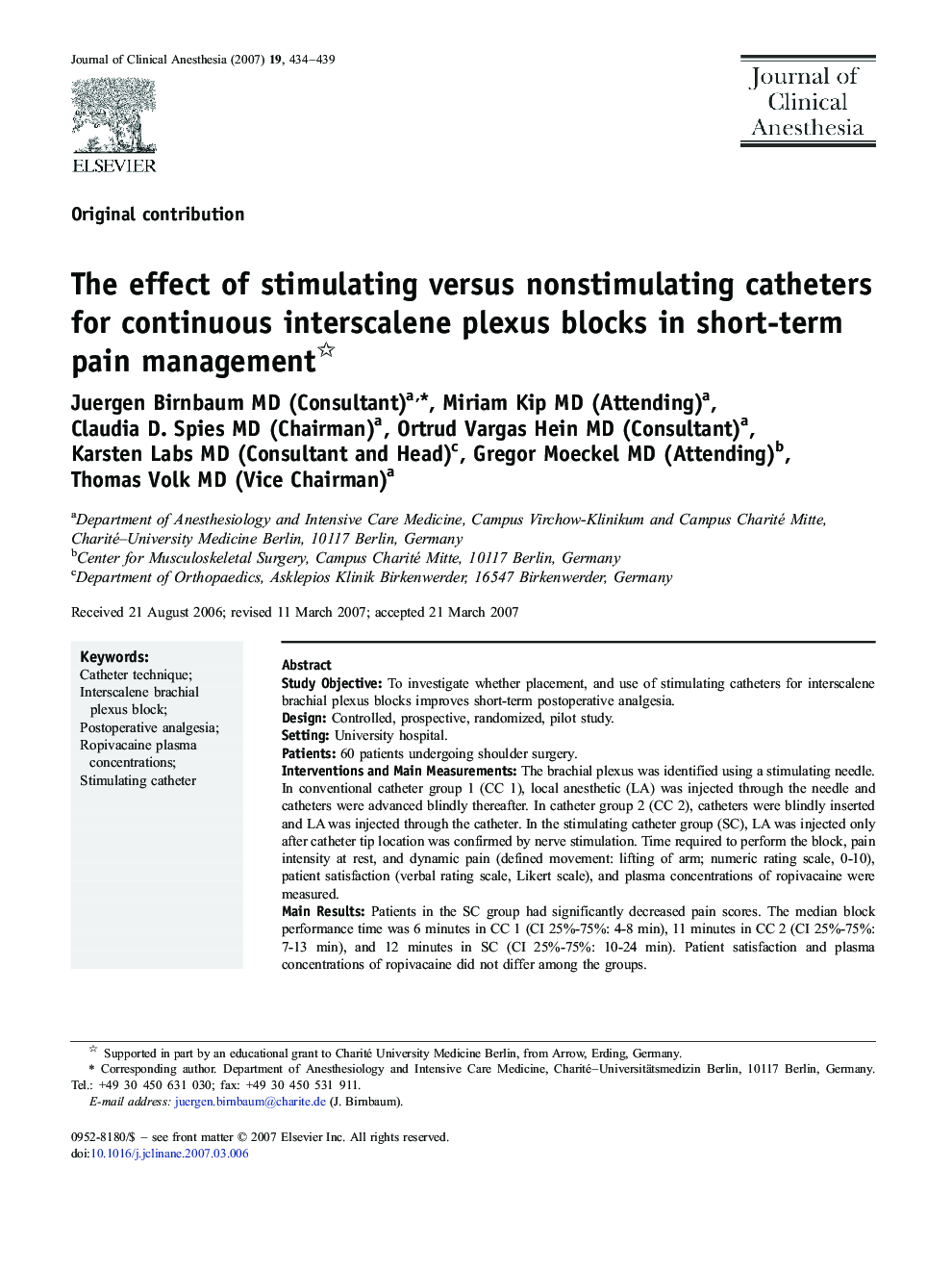| Article ID | Journal | Published Year | Pages | File Type |
|---|---|---|---|---|
| 2763895 | Journal of Clinical Anesthesia | 2007 | 6 Pages |
Study ObjectiveTo investigate whether placement, and use of stimulating catheters for interscalene brachial plexus blocks improves short-term postoperative analgesia.DesignControlled, prospective, randomized, pilot study.SettingUniversity hospital.Patients60 patients undergoing shoulder surgery.Interventions and Main MeasurementsThe brachial plexus was identified using a stimulating needle. In conventional catheter group 1 (CC 1), local anesthetic (LA) was injected through the needle and catheters were advanced blindly thereafter. In catheter group 2 (CC 2), catheters were blindly inserted and LA was injected through the catheter. In the stimulating catheter group (SC), LA was injected only after catheter tip location was confirmed by nerve stimulation. Time required to perform the block, pain intensity at rest, and dynamic pain (defined movement: lifting of arm; numeric rating scale, 0-10), patient satisfaction (verbal rating scale, Likert scale), and plasma concentrations of ropivacaine were measured.Main ResultsPatients in the SC group had significantly decreased pain scores. The median block performance time was 6 minutes in CC 1 (CI 25%-75%: 4-8 min), 11 minutes in CC 2 (CI 25%-75%: 7-13 min), and 12 minutes in SC (CI 25%-75%: 10-24 min). Patient satisfaction and plasma concentrations of ropivacaine did not differ among the groups.ConclusionsStimulating catheters for interscalene plexus blocks improve postoperative analgesia at rest in patients undergoing shoulder surgery.
